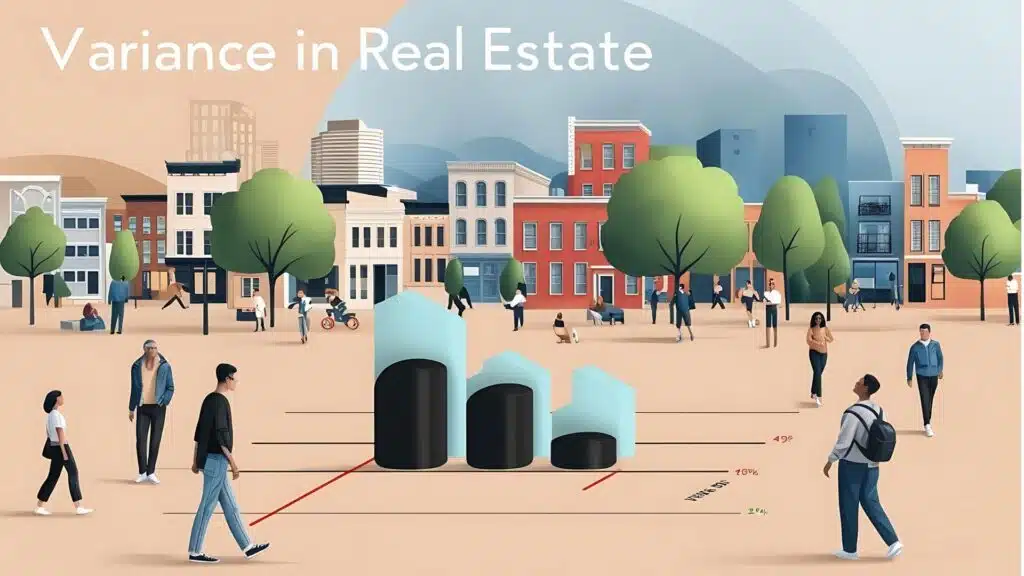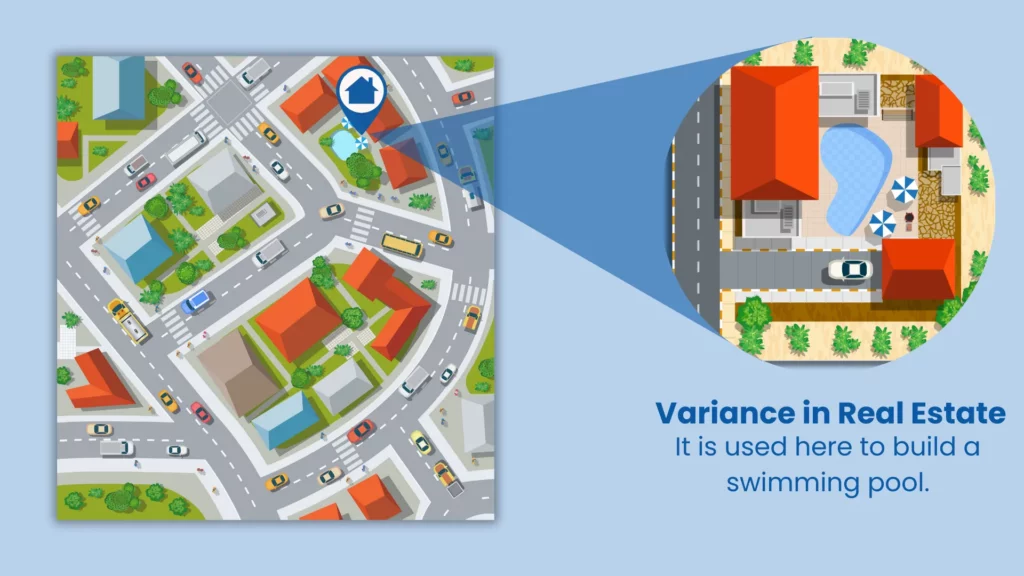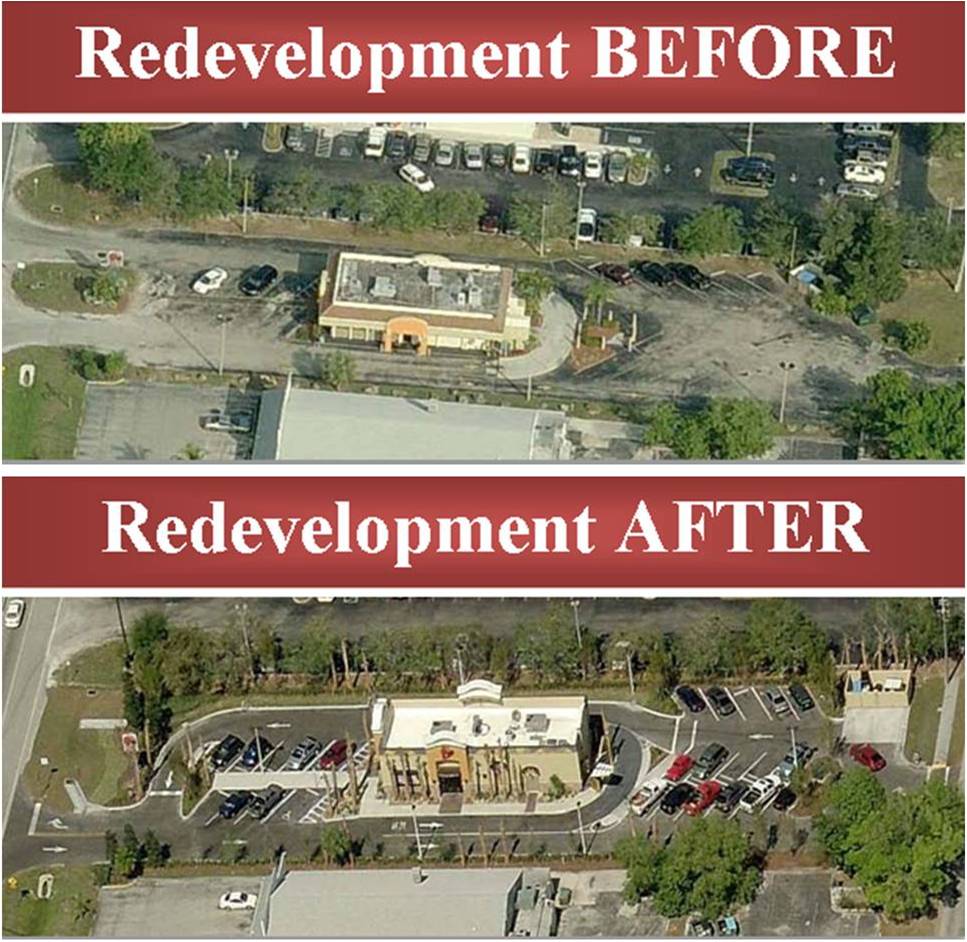A variance in real estate is a legal exception to zoning laws. It allows property owners to use their land in a way that is not normally permitted by local regulations.

A variance is crucial for property owners who want to make specific modifications or uses that deviate from zoning ordinances. These exceptions can range from building structures closer to property lines to changing the designated use of the land. Securing a variance typically involves a formal application and sometimes a public hearing.
The approval process ensures that the proposed changes do not negatively impact the community or environment. Understanding variances can help property owners maximize their land’s potential while staying compliant with local laws.

Credit: www.quickenloans.com
Introduction To Variance in Real Estate
Understanding variance is key in real estate. A variance can change property use. It can also affect property value.
This guide will explain what a variance is and why it matters.
Definition
A variance is a legal exception to zoning laws.
Zoning laws regulate property use. A variance allows deviation from these rules.
The local government grants variances. A property owner must apply for it.
They need to provide a good reason.
Importance In Real Estate
Variances can impact property value. They allow flexible property use.
This flexibility can increase property appeal.
Without a variance, property use is restricted.
This can limit the property’s potential.
A variance can unlock new opportunities.
| Aspect | Impact of Variance |
|---|---|
| Property Use | Allows diverse uses |
| Property Value | Can increase value |
| Market Appeal | Enhances marketability |
- Flexibility – Variances offer property use flexibility.
- Opportunity – They create new opportunities for property owners.
- Value – They can significantly boost property value.
Types Of Variances
In real estate, a variance allows deviations from zoning laws. There are two main types of variances: Use Variance and Area Variance. Each serves different purposes and has specific requirements. Understanding these can help property owners make informed decisions.
Use Variance
A Use Variance permits a property to be used in a way not allowed by zoning laws. This type of variance is often needed for commercial uses in residential zones. For example, turning a house into a small business might require a use variance.
Key Points:
- Not allowed by zoning laws
- Needed for commercial uses in residential zones
- Requires proving hardship or special circumstances
Area Variance
An Area Variance allows changes to physical or dimensional requirements. This could include setbacks, building height, or lot coverage. For instance, building closer to the property line than allowed might need an area variance.
Key Points:
- Changes physical or dimensional requirements
- Needed for setbacks, height, or lot coverage
- Requires proving no negative impact on the community
| Type of Variance | Purpose | Requirements |
|---|---|---|
| Use Variance | Allows non-conforming uses | Proving hardship or special circumstances |
| Area Variance | Changes physical requirements | Proving no negative impact |
Legal Framework
Understanding the legal framework of a variance in real estate is essential. Variances allow property owners to deviate from local zoning laws. This section will cover key aspects of the legal framework.
Zoning Laws
Zoning laws regulate land use in specific areas. These laws determine the types of buildings allowed. They also control the building’s height, size, and location. Local governments enforce zoning laws to maintain order. Zoning laws ensure a balanced development of communities. Property owners must comply with these regulations.
Approval Process
The approval process for a variance involves several steps. Property owners must file an application. This application includes details about the property and the requested variance. The local zoning board reviews the application.
Here are the typical steps involved:
- Submit a detailed application to the zoning board.
- Pay any required fees.
- Attend a public hearing.
- Present your case to the zoning board.
- Receive a decision from the board.
During the public hearing, neighbors can voice their opinions. The zoning board considers these opinions before making a decision.
If approved, the property owner receives a variance permit. This permit allows them to deviate from the zoning laws.
| Step | Description |
|---|---|
| Application Submission | File an application with property details. |
| Fee Payment | Pay the required application fees. |
| Public Hearing | Attend a meeting and present the case. |
| Decision | Receive approval or denial from the board. |
Application Process
Applying for a variance in real estate can be complex. It’s essential to follow each step carefully. Below, we break down the application process to make it easier.
Required Documents
To apply for a variance, you need specific documents. These help the board evaluate your request.
- Application Form: Complete the official variance application form.
- Property Deed: Provide a copy of the current property deed.
- Site Plan: Submit a detailed site plan showing existing and proposed structures.
- Letter of Intent: Write a letter explaining why you need the variance.
- Neighbor Notification: Proof that you have notified your neighbors.
Submission Guidelines
Follow these guidelines to ensure your application is accepted:
- Review Local Zoning Laws: Check the local zoning laws to understand what is allowed.
- Complete All Forms: Fill out all required forms accurately.
- Attach Necessary Documents: Make sure to attach all the required documents.
- Pay Fees: Pay any applicable fees when submitting your application.
- Submit On Time: Submit your application before the deadline.
Submitting all required documents and following guidelines increases your chances of approval. Make sure to double-check everything before submission.
Common Challenges
Understanding what a variance is in real estate is crucial. Variances allow property owners to deviate from local zoning laws. While obtaining a variance can offer benefits, it comes with common challenges.
Neighbour Objections
One common challenge is neighbour objections. Neighbours might worry about changes impacting their property. They might fear increased noise or traffic. A variance can lead to disputes among neighbours.
When seeking a variance, it’s important to communicate with neighbours. Explain your plans clearly. Address their concerns to minimize objections. This can help build support for your variance request.
Environmental Concerns
Another significant challenge involves environmental concerns. Changes to a property can affect the environment. This includes impacts on local wildlife or water sources. Environmental agencies may need to review your plans.
To address these concerns, conduct an environmental impact study. Ensure your plans adhere to environmental regulations. This can prevent delays and increase the chances of approval.
| Challenge | Solution |
|---|---|
| Neighbour Objections | Communicate plans, address concerns |
| Environmental Concerns | Conduct impact study, follow regulations |
Benefits Of Variance
Understanding the benefits of variance in real estate can be crucial. Variance allows property owners to make changes that would otherwise be restricted. This flexibility can lead to several advantages, enhancing both property value and land use.
Increased Property Value
One major benefit of variance is the potential for increased property value. When you obtain a variance, you can make modifications that make your property more appealing. For example, adding an additional story to a house can provide more living space. This can attract more buyers and drive up the price.
Also, certain variances can allow for commercial uses in residential areas. This can significantly boost the property’s market value. A property with a variance often stands out in the market, making it a more desirable investment.
Enhanced Land Use
Variance also allows for enhanced land use. It gives property owners the ability to use their land in more efficient ways. For instance, a variance can allow the construction of a multi-family unit in a single-family zone. This maximizes the use of available land.
In many cases, variance can help preserve natural resources. For example, a variance might permit a building closer to the property line, leaving more open space for gardens or parks. This can be beneficial for community well-being and environmental sustainability.
Here are some specific benefits of enhanced land use through variance:
- More creative architectural designs
- Better community planning
- Higher-density housing options
- Improved environmental conservation
Understanding the benefits of variance can help property owners make informed decisions. This can lead to a more valuable and efficiently used piece of real estate.
Case Studies
Variance in real estate can play a crucial role in property development. They provide flexibility in adhering to zoning laws. Real-life examples of variances offer valuable insights. Below, we explore case studies that highlight both successful variances and lessons learned.
Successful Variances
Successful variances often lead to beneficial changes in property use. Here are a few examples:
| Case Study | Description | Outcome |
|---|---|---|
| Residential Expansion | A homeowner requested a variance to build an extra room. | The variance was approved, and property value increased. |
| Commercial Property | A business sought a variance to change the building’s use. | The new use attracted more customers, boosting local economy. |
| Historic Preservation | A developer applied for a variance to preserve a historic site. | The variance was granted, and the site became a tourist spot. |
Lessons Learned
Not all variances result in success. Here are some lessons learned:
- Research: Always conduct thorough research before applying for a variance.
- Community Impact: Consider the impact on the local community.
- Legal Advice: Seek legal advice to understand zoning laws better.
- Documentation: Ensure all required documents are complete and accurate.
These lessons can help avoid common pitfalls. They also guide towards more successful variance applications.

Credit: www.houzeo.com
Tips For Success
Understanding how to obtain a variance in real estate can be complex. To increase your chances of success, follow these tips:
Consulting Experts
Consulting experts can make the process easier. Real estate attorneys know the rules and can offer guidance. Zoning consultants understand local regulations. They can help prepare your application. Hiring an expert saves time and avoids mistakes.
Effective Planning
Effective planning is crucial. Start by researching local zoning laws. Know what you need to change. Create a clear plan for your project. Make sure your plan meets local guidelines. Have a backup plan if things go wrong.
Prepare a solid argument for why you need the variance. Show how it benefits the community. Gather support from neighbors. Their approval can help your case.
| Step | Action |
|---|---|
| 1 | Research zoning laws |
| 2 | Consult experts |
| 3 | Create a clear plan |
| 4 | Prepare a strong argument |
| 5 | Gather community support |
Following these steps can improve your chances of success. Always be prepared and stay organized.

Credit: www.leegov.com
Conclusion
Understanding variance in real estate helps navigate property regulations. It allows for flexibility in land use. Knowing the process can save time and money. Properly applying for a variance ensures compliance with local laws. Stay informed to make the best real estate decisions.






